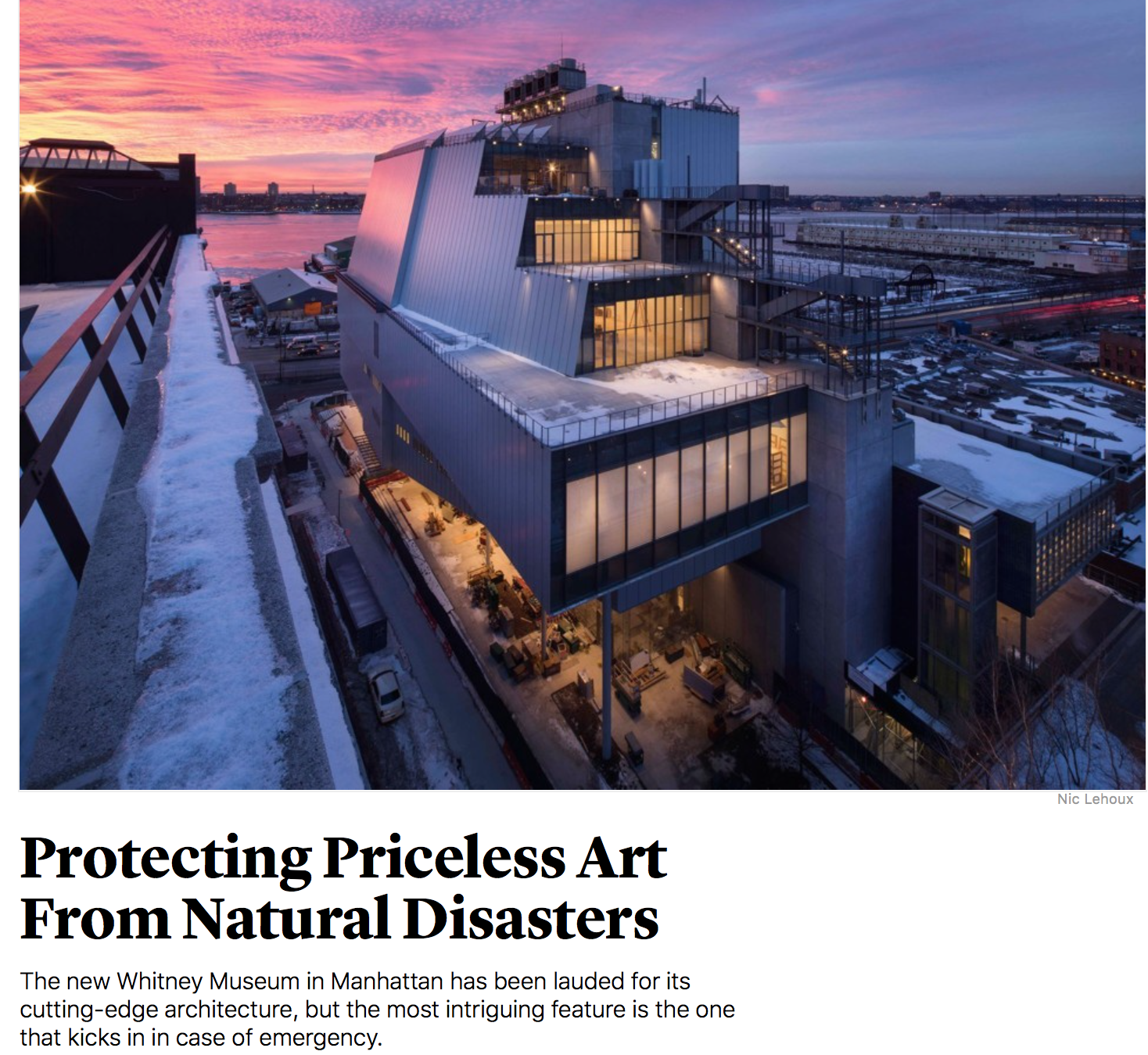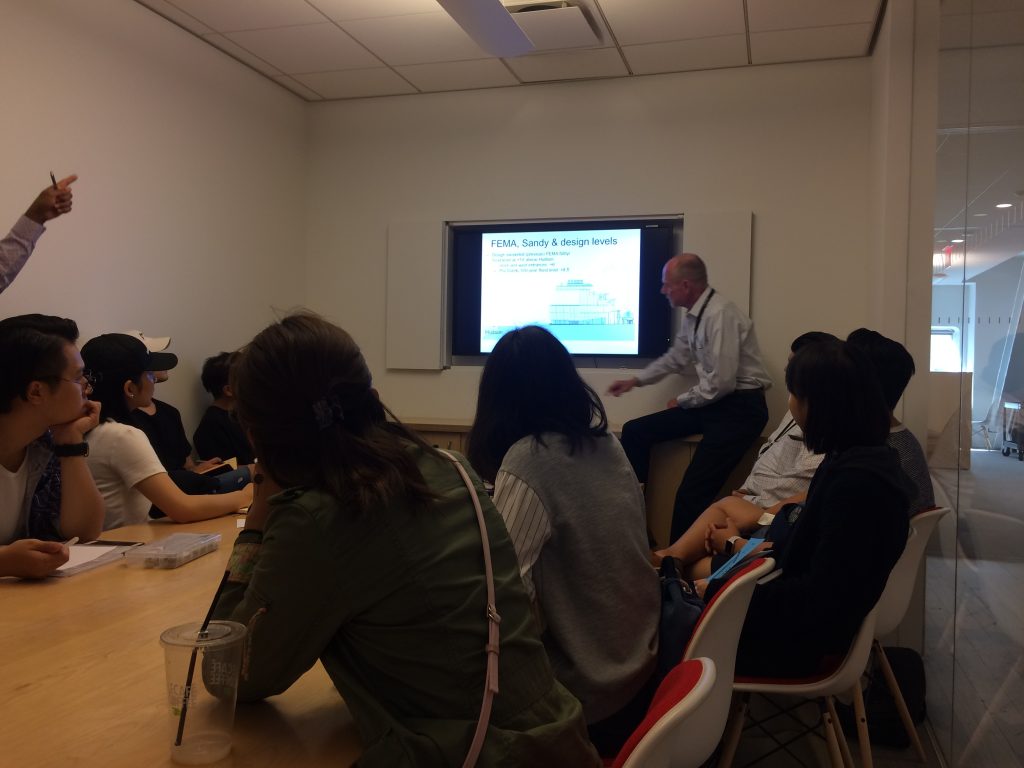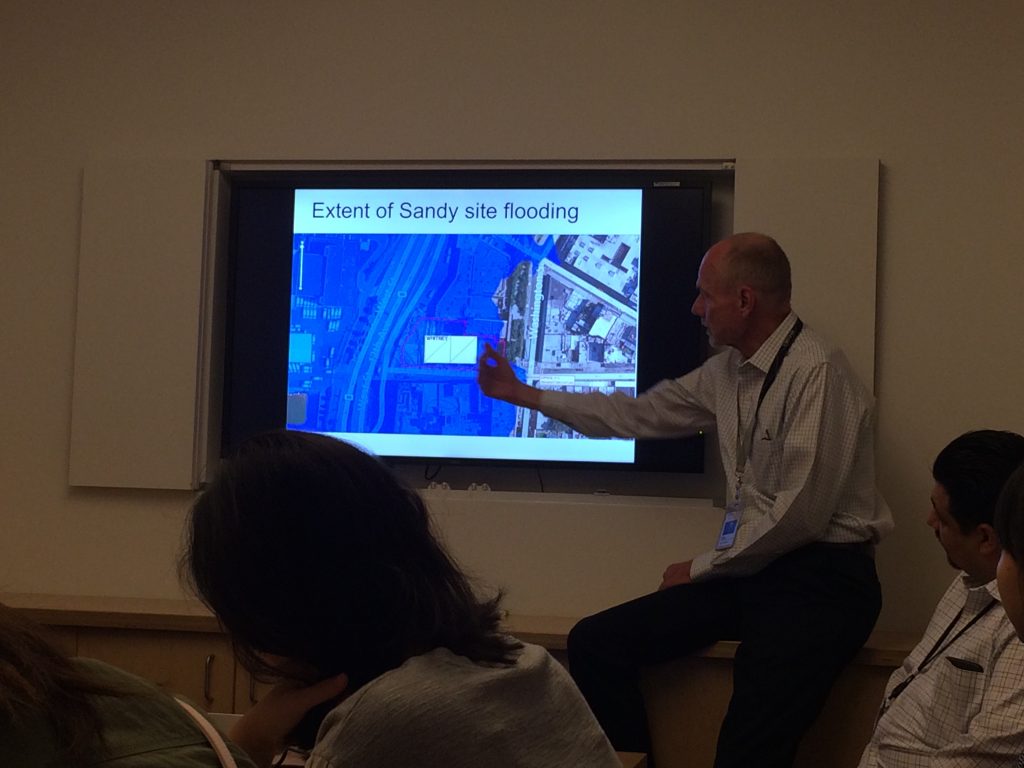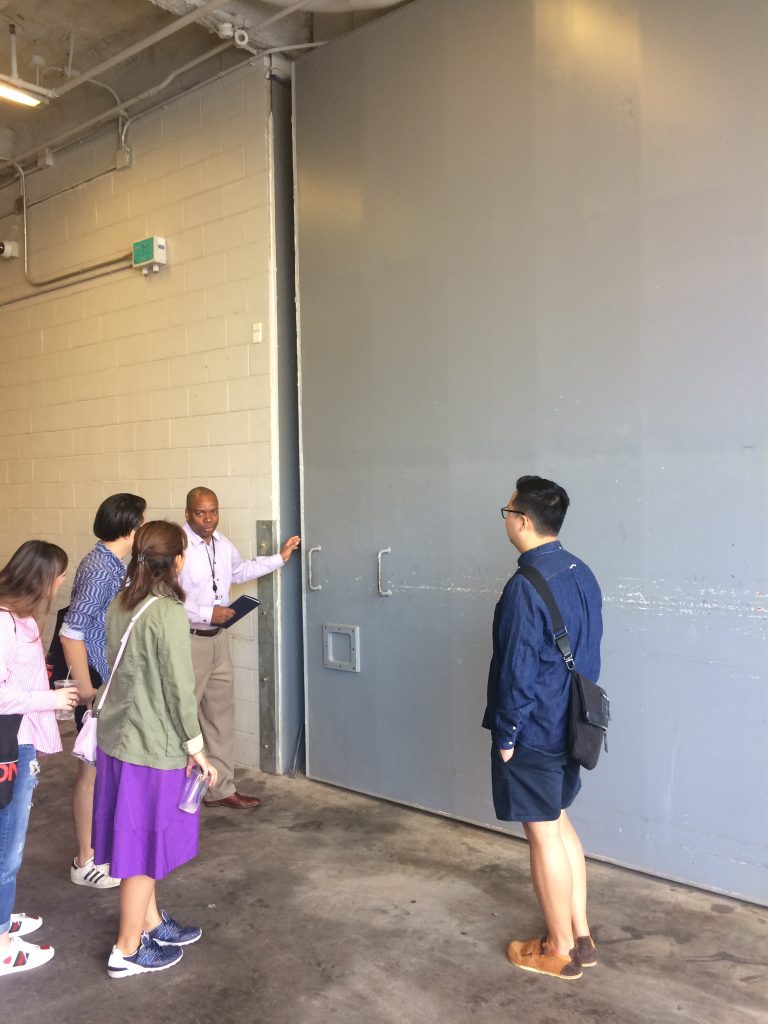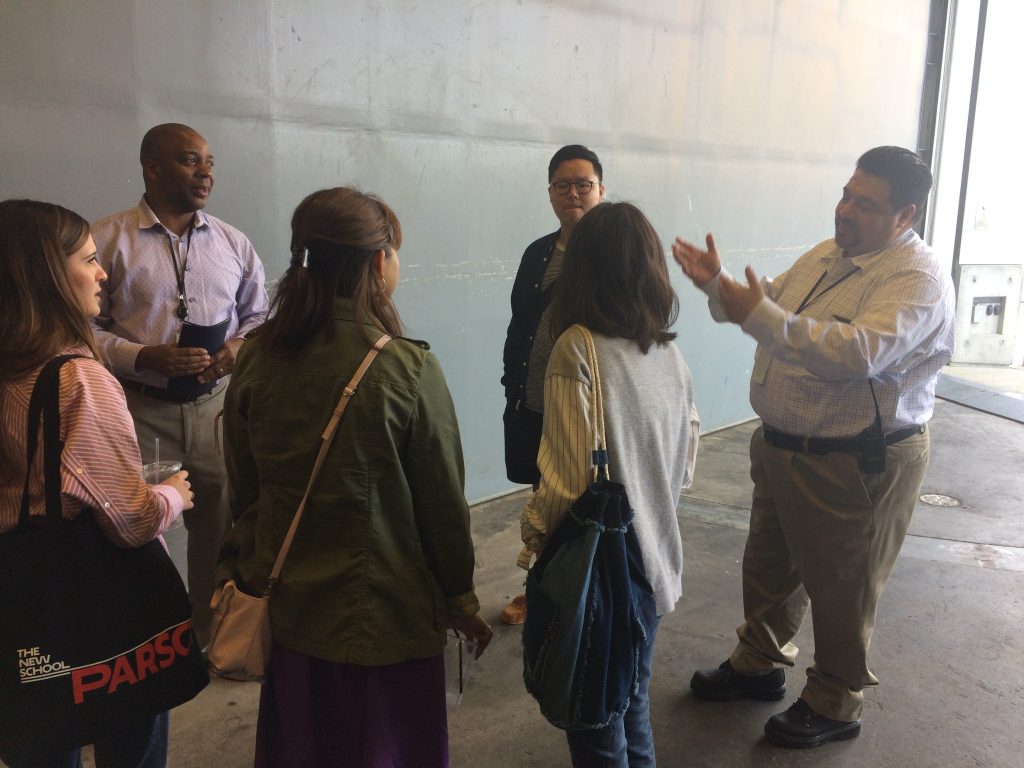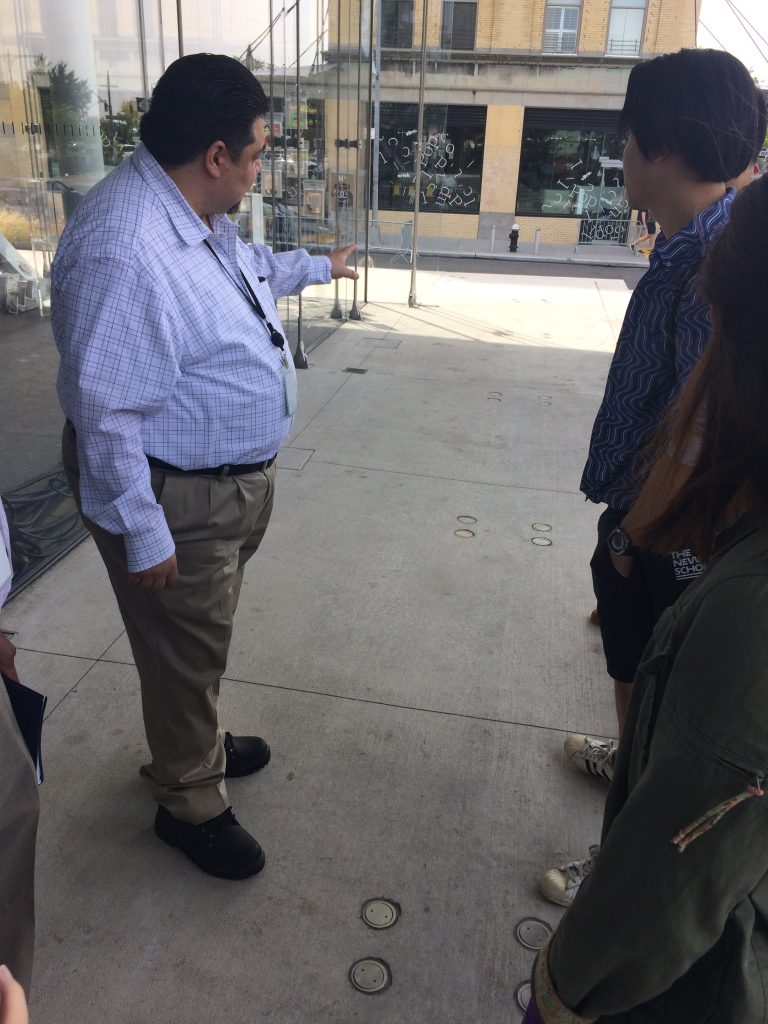image: The Atlantic: “Protecting Priceless Art From Natural Disasters” May 2015
“But the new Whitney’s most intriguing feature might be one that’s gone largely unnoticed: its custom flood-mitigation system, which was designed halfway through the museum’s construction, in the aftermath of 2012’s Hurricane Sandy, when more than five million gallons of water flooded the site. The system’s features include a 15,500-pound door designed by engineers who build water-tight latches for the U.S. Navy’s Destroyers. “Buildings now have to be designed like submarines,” said Kevin Schorn, an assistant to Piano, reflecting on the demands of a warming world and what it might mean for design. “Do we have to completely rethink our infrastructure? Do we have to completely rethink everything?”
On September 12, 2017, the LS Section of Sustainable Systems was given a tour and introductory lecture to the Whitney’s flood mitigation system. The tour was especially poignant, following two major hurricanes in the United States within two weeks, Hurricane Harvey and Hurricane Irma.
The tour and lecture were facilitated by the Whitney’s COO, John Stanley, Peter Scott, Director of Facilities and David Selimoski, Engineering Manager.
LP reflections:
– What does it feel like to go to an art museum, not see art, but to learn about this specialized environmental design instead? Do you think more people should know about these kinds of projects and designs?
“It felt like looking behind the scenes and what does the place where many people come to see art do to not only protect art but how they have taken the design to another level where not just aesthetics takes part but functionality. Moreover, it also makes me reflect and think about the changes during the Anthropocene, because I think that 15 or 20 years ago my parents would have never gone to a museum to learn about the environmental design they have implemented, because at that time that didn’t even exist. So, yes, I believe more people should be informed and learn about projects that are being planned because in this way this can serve as an inspiration to keep innovating and know how the role of design is essential to design beyond the present to make a city stronger during the Anthropocene.” student response Alda Borges
“It is a really special experience, if I didn’t take this experience, I will never know the backstage works of this museum. Now, I knew the Whitney museum not just showing the art project for people but also keep exploring the solutions for many public problems. I feel really interesting to know how people work in museum. I think people need to know more about these kinds of projects, it is a good opportunity to get not only the art education but also the exploring spirit in the museum.” student response Tanghui Liao
– Do you feel that the Whitney’s flood mitigation system and building design is as artful/creative as the works of art it protects in the galleries? Which kind of art and design would you rather create?
“I think it is. The design was made with detailed analysis on geographical feature and climate change, the design process went through the careful curation based on the consideration of the museum’s needs and possible user scenery that might be happening during the emergency situation (like the navy ship door that could be closed by only one person). This is all done with careful and detailed observation and visionary insights of human need.
I would say one thing I appreciate very much in this project is the care given to the user. Still, it is the usage of the navy ship door that really impressed me – one person could closed the door to protect the the flood go into the building. And I think this is something I would learn and something I would like to put in my own design project.” – student response Yi Tang
– Did the visit change your idea of what creative and useful design might be in the age of climate change and the Anthropocene?
“Yes. As in last week we did some shallow research on Anthropocene, I didn’t know what we could do for the coming future and it seems like no one else has a solution. But now, at least I know what we can do with the space which we live in.” student response Yi Tang
“As the human society developed, we have more freedom to think about something besides being alive. At first, useful design are more attractive. Later on, the creative ones brought new color to the world. As for now, we’ve already entered an era that people value both creativity and usefulness of a design. I think the Whitney Museum is a good combination of both. I’ve visited the museum before, the diverse artworks always made me feel dizzy. Now I learn the flood mitigation system, I adore the museum more. An useful design doesn’t need to be very obvious that tells every its usefulness at the first glance.” student response Athena Wang
– What did you think of the presentations? Did the visit make you feel differently about living in New York What did you find most interesting?
“It was an interesting experience to have a presentation about flood mitigation in an art museum. I was most impressed by how designers were enabled and even encouraged by suffering the storm Sandy in 2012. Designers and engineers immediately realized how climate changing influenced on architecture, and took that challenge to a highlight in the design.” student response Olivia Zhu
“I think the information in the presentation is very thorough. However, I was a little bit sad about how NYC react to the hurricane. Maybe because I come from a Communist country, or maybe because I don’t know politics at all, I couldn’t 100% accept the way Whitney Museum defend from the hurricane/flood. I do think the system Whiney Museum has is really powerful. It protects the building and the artworks. On the other hand, I thought it would be more efficient if people also consider improving the drainage of water. It’s obvious that if a building stops the water, the water will change the direction and runs to other buildings. Therefore, it may be more helpful, if it is possible, to lead the water to the correct direction, instead of letting it go.” student response Athena Wang
Further reading:
In Queens, chronic flooding and sea-level rise go hand in hand, October 2017
One Eye on Art, the Other on Water, NY Times,
12 Innovative Post-Sandy Projects Built to Withstand Future Storms, October 2017
